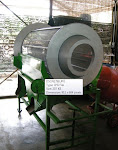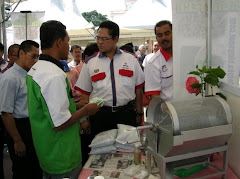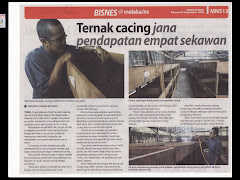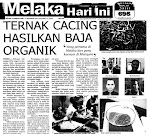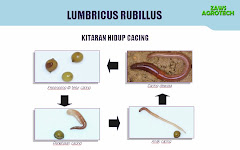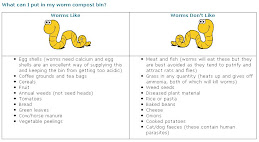BY: Pablo Hidalgo, Maria Sindoni, Frank Matta, and David H. Nagel; Missississippi State University
Hidalgo and Sindoni are graduate students, Matta is a professor of horticulture, Nagel is an associate professor of horticulture in the MSU Department of Plant and Soil Sciences.
Introduction
Cucumber (Cucumis sativus) is among the most important crop species in the Cucurbitaceae family. This cultivated species is frequently used in the tropics, subtropics, and milder portions of the temperate zones of both hemispheres. Cucumbers are mainly used in the preparation of salads and pickles (Whitakes and Davis, 1962).
Studies in England, which have been complemented by research in France, Germany, Italy, and Spain, have demonstrated considerable economic potential of using earthworms to convert a wide range of organics into valuable and efficient plant growth media (Edwards, 1995).
In many parts of the world, earthworms are a major component of the biomass of soil animals. Because of their relatively large size and characteristic feeding behavior, certain species have significant impact on soil structure, soil fertility, plant growth, and crop yield (Abbot and Parker, 1981). Recent work has drawn attention to the importance of earthworms in maintaining soil fertility and favorable conditions for plant growth in minimum cultivation farming. Earthworm output includes assimilable products of excretion such as ammonia, urea, and body tissues that are rapidly mineralized. Thus, earthworm castings represent a potentially significant source of readily available nutrients for plant growth (Curry and Byrne, 1992).
Several researchers have studied the role of earthworms in soil fertility. From such studies, it has been established that earthworms are one of the most useful and active agents in introducing suitable chemical, physical, and microbiological changes in the soil and, thereby, directly increasing the fertility and crop-producing power of soils (Joshi and Kelkar, 1951). Edwards and Bates (1992), found that earthworms increased significantly the number, growth rate, and yield of plants growing on inoculated sites.
Grass production doubled in New Zealand, a region that historically did not have earthworms, when European species were introduced. In Bangalore, India, earthworms successfully decomposed sugar factory residuals and turned them into a soil nutrient that allowed farmers using the material to reduce chemical fertilizers by 50% (Logsdon, 1994).
The objective of this study was to determine the effect of earthworm castings as a soil media on germination and seedling development of cucumber. Data show that earthworm castings increased germination rate and enhanced seedling growth of cucumber seeds.
Materials and Methods
The effect of earthworm castings as a soil mix on seed germination and seedling growth of cucumber (C. sativus) was evaluated in a greenhouse at Mississippi State University.
Three growing media were compared: (1) earthworm castings produced under greenhouse conditions, using the specie Eisenia fetida andrei cultured on cow manure; (2) regular soil mix (perlite : vermiculite : peat moss, 1:1:1 by volume); and (3) a mixture of earthworm casting and regular soil mix (1:1 by volume). Each treatment was replicated three times, and each replication consisted of 25 small 5- by 5-centimeter plastic pots (two seeds per pot) filled with the respective media. Plastic pots were placed in plastic flats (30 by 45 centimeters) on a greenhouse bench. The experimental design was a completely randomized design with subsampling. Seeds were germinated at a mean temperature of 28 degrees Celsius.
Pots were watered daily and data collected every 3 days during the first week after seeding and once during the second week. Ten plants per replication were randomly chosen to evaluate the development of seedlings. Observations were ended when the second true leaf of each plant was well developed and expanded. Germination percentage was tabulated during the first 10 days as a measure of germination rate. Seedling development (length in centimeters) was measured 21 days after seeding.
In addition, 10 plants per replication were randomly selected to compare root development as influenced by the different treatments. Root development was determined using a visual scale of 1-3 (1 = more and larger roots, 3 = fewer and shorter roots). Analyses of variance were conducted using SAS, and means were separated by Duncan's Multiple Range Test at 5% significance level.
Results and Discussion
Compared with the regular mix treatment, germination rate (expressed as germination percentage) increased 10 days after seeding when media consisted of pure earthworm castings or earthworm castings supplemented with regular mix (Table 1).
Table 1.
Influence of growing media oncucumber seed germination 10 days after seeding.
Media----------------------------------------Germination(%)
Earthworm castings----------------------95a1
Earthworm castings + regular mix--92a
Regular mix---------------------------------75b
1 Means in columns separated by Duncan's Multiple Range Test, 5% significance level.
Seedling length 21 days after emergence was also increased by these two treatments, compared with regular mix alone (Table 2).
Table 2.
Influence of growing media in cucumber seedling development 21 days after emergence.
Media-----------------------------------Seedling length (cm)
Earthworm castings----------------------15.27a1
Earthworm castings + regular mix---13.70a
Regular mix----------------------------------8.87b
1 Means in column separated by Duncan's Multiple Range Test, 5% significance level.
Earthworm castings plus regular mix produced the most abundant and largest root system, compared with the other treatments (Table 3).
Table 3.
Influence of growing media on cucumber root development.
Media-------------------------------------------Root growth1
Earthworm castings + regular mix--------2.7a2
Earthworm castings----------------------------2.1b
Regular mix---------------------------------------1.4c
1 Visual rating: 1 = more and larger roots; 3 = fewer and shorter roots.
2 Means in column separated by Duncan's Multiple Range Test, 5% significance level.
Root growth was greater in plants seeded in earthworm castings alone than in regular mix alone. Root growth as influenced by the various treatments is illustrated in Figure 1. Similar results were found by Edwards and Bates (1992) and Edwards and Lofty (1980).
Soil that has passed through the gut of earthworms changes so that nutrients are in a more available form for uptake by plants. Thus, earthworms should promote plant growth (Abbot and Parker, 1981). Basker et al. (1993) point out that studies carried out under field conditions indicated that the castings of earthworms contained two to three times more available K than the surrounding soil. The concentration of NH4+ in the castings of earthworms can increase during gut passage of the ingested soil and after the soil material has been egested as castings. In the earthworm gut, ingested soil particles and organic matter are mixed with water and mucus, and the pH becomes neutral. Bohlen and Edwards (1995) state that earthworms had significant effects on the amount of extractable NO3-, which increased with time. Other researchers found that earthworm castings generally have a higher ammonium concentration and water-holding capacity than bulk soil samples, and they constitute sites of high denitrification potential (Elliot et al., 1990).
Cereal yield was increased significantly by earthworm inoculation (Edwards and Lofty, 1980). When earthworms have been added to soil, either in pots or in the field, increases in yield have resulted. In five tests, with different crops and soils, earthworms consistently increased yields. Their influences varied widely according to crop and soil. The increases in yield were attributed to the release of beneficial chemicals from the bodies of the earthworms (Hopp, 1949).
The increased pasture yields found by Nielson (1965) may be due to the presence of plant-growth-promoting compounds elaborated by earthworms and secreted by them into their castings, which then supplement the soil. Ruz-Jerez et al. (1992) stated that soils previously inhabited by earthworms promote a significant increase in plant growth and N uptake. In experiments conducted in the Côte d'Ivoire, increased growth of maize in an infertile, granite-derived soil was associated with the addition of earthworms to the soil (Spain et al., 1992).
It is now well established that passage through the gut of some lumbricid earthworms results in phosphorus being converted to forms that are plant-available. Phosphorus is a limiting element for plant growth. Any process that significantly increases phosphorus availability and rate of turnover through plants and soil organic matter is very important (Reinecke et al., 1992). Parkin and Berry (1994) also concluded that earthworm castings were enriched in mineral N, compared with the surrounding soil. Therefore, nitrogen may be involved in plant growth.
Conclusion
In this experiment, the combination of earthworm castings plus regular mix resulted in seedling growth comparable to seedling growth in castings alone. In addition, root growth was greater in plants grown with earthworm castings plus regular mix. Therefore, the combination of earthworm castings and regular mix would be a suitable media to enhance seedling growth.
Cucumber seed is planted directly in the field. Therefore, it may be beneficial to use earthworm castings mixed with soil in the area where the seed is to be planted. Soil incorporating earthworm casting may result in early seedling establishment due to early seedling emergence and rapid plant growth. Using earthworm castings may reduce use of fertilizers and other agricultural chemicals.
If plant production is to be maintained or increased, practical methods must be found to optimize nutrient cycling and reduce the reliance on fertilizers and agricultural chemicals in farming systems. Earthworms may have a significant role in maintaining or enhancing plant growth and reducing use of fertilizers (Lee, 1985). Studies must be conducted to determine if casting offers a major source of plant-growth-promoting hormones and available nutrients that enhance germination and plant growth.
Bibliography
Abbot, I., and C. A. Parker. 1981. Interactions between earthworms and their soil environment. Soil Biology and Biochemistry. 13, 191-197.
Basker, A., A. MacGregor, and J. Kirkman. 1993. Exchangeable potassium and other cations in non-ingested soil and cast of two species of pasture earthworms. Soil Biology and Biochemistry. 25(12): 1673- 1677.
Bohlen, P., and C. A. Edwards. 1995. Earthworm effects on N dynamics and soil respiration in microcosms receiving organic and inorganic nutrients. Soil Biology and Biochemistry. 27(3): 341-348.
Curry, J. P., and D. Byrne. 1992. The role of earthworms in straw decomposition and nitrogen turnover in arable land in Ireland. Soil Biology and Biochemistry. 24(12): 1409-1412.
Edwards, C. A. 1995. Historical overview of vermicomposting. BioCycle. 36(6): 56-58.
Edwards, C. A., and J. E. Bates. 1992. The use of earthworms in environmental management. Soil Biology and Biochemistry. 14(12):1683-1689.
Edwards, C. A., and J. R. Lofty. 1980. The effects of earthworm inoculation upon the root growth of direct drilled cereals. Journal of Applied Ecology. 17, 553-543.
Elliot, P. W., D. Knight, and J. M. Anderson. 1990. Denitrification in earthworm casts and soil from pastures under different fertilizer and drainage regimes. Soil Biology and Biochemistry. 22(5): 601-605.
Hopp, H. 1949. The effect of earthworms on the productivity of agricultural soil. Journal of Agricultural Research. 78(10): 325-339.
Joshi, N. V. and B. Kelkar. 1951. The role of earthworms in soil fertility. The Indian Journal of Agricultural Science. 22(2): 189-196.
Lee, K. 1985. Earthworms. Their Ecology and Relationships with Soil and Land Use. Academy Press. Sidney.
Logsdon, G. 1994. Worldwide progress in vermicomposting. BioCycle. 35(10):63-65.
Nielson, R. 1965. Presence of plant growth substances in earthworms demonstrated by paper chromatography and the Went Pea Test. Nature. 208(5015):1113-1114.
Parkin, T. and E. Berry. 1994. Nitrogen transformations associated with earthworm casts. Soil Biology and Biochemistry. 26(9):1233-1238.
Reinecke, A., S. Viljoen, and R. Saayman. 1992. The suitability of Eudrilus eugeniae, Perionyx excavatus, and Eisenia fetida (Oligochaeta) for vermicomposting in Southern Africa in terms of their temperature requirements. Soil Biology and Biochemistry. 24(12): 1295-1307.
Ruz-Jerez, B., P. Roger, and R. Tillman. 1992. Laboratory assessment of nutrient release from a pasture soil receiving grass or clover residues, in the presence or absence of Lumbricus rubellus or Eisenia fetida. Soil Biology and Biochemistry. 24(12): 1529-1534.
Spain, A., P. Lavelle, and A. Mariotti. 1992. Stimulation of plant growth by tropical earthworms. Soil Biology and Biochemistry. 16(2): 185-189.
Whitaker, T., and G. Davis. 1962. Cucurbits: Botany, Cultivation and Utilization. World Crops Books Interscience Publisher, Inc., New York.
Hubungi Kami
Followers

Lokasi C
Parkman Agro
|
Try My Fast URL: http://clix.to/ternak_cacing 
|
Article CACING
- Alternatif dari Bahan Cacing Tanah (Lubricus Rubellus)
- Baja Kompos Secara Ringkasnya
- Baja organik berasaskan najis babi pula didedahkan
- Basic Earthworm Biology
- Cacing jana pendapatan lumayan
- Cacing pun Bisa Menguntungkan
- CACING SEBAGAI UBAT
- Cacing Tanah - Lumbricus Rubellus
- CacingTanah
- Dulu makan gaji, kini pengusaha cacing berjaya
- Fatwa ternak cacing
- Harga baja kimia naik lebih 20%
- Harga mampu cecah RM600 sekilogram
- Hidup mewah - menternak cacing
- How to make good compost
- Kitaran Hidup Cacing
- Kompos: Cara-cara Penyediaan Secara Sendiri
- Lawatan Penulis Blog LigaKampung
- Lawatan YB ke reban cacing di Kg Tehel
- Lintah Dan Cacing Harus Untuk Perubatan Dan Kosmetik
- Pasaran Cacing- Mana Arahnya
- Permintaan cacing di pasaran semakin tinggi
- Potensi Ternakan Cacing Kompos
- Ternakan cacing kompos.
- TONG SAMPAH MESRA ALAM - BioCom
- Usahawan cacing Kemaman
- Vermicompos
- Vermikompos (Kompos Cacing Tanah)
- Worm your way into money
EM - Effective Microorganisms
Cara Penternakan Cacing
Kewangan ANDA
BULETIN
Blog Archive
-
▼
2008
(75)
-
▼
May
(25)
- APLIKASI DAN PENYIMPANAN EM
- Effective Microorganisms
- Harga baja kimia naik lebih 20%
- Baja organik berasaskan najis babi pula didedahkan
- Kitaran Hidup Cacing
- Harga mampu cecah RM600 sekilogram
- Permintaan cacing di pasaran semakin tinggi
- Cacing jana pendapatan lumayan
- Ternak Cacing - Hidup mewah ternak cacing
- VERMIKOMPOS(Kompos Cacing Tanah)PUPUK ORGANIK BERK...
- Pakan Ikan Alternatif dari Bahan Cacing Tanah (Lub...
- Cacing pun Bisa Menguntungkan
- Vermikompos (Kompos Cacing Tanah)
- Earthworm Castings Increase Germination Rate and S...
- Media Containing Earthworm Castings as Related to ...
- ASB & Unit Trust : Mana Satu Lebih Untung?
- Adakah Untung Dalam Unit Trust?
- Pelaburan Unit Trust
- Kompos-baja organik
- TONG SAMPAH MESRA ALAM - BioCom
- Baja Kompos Secara Ringkasnya
- Usahawan cacing Kemaman
- Basic Earthworm Biology
- Worm your way into money
- Cacing Like & Unlike
-
▼
May
(25)

